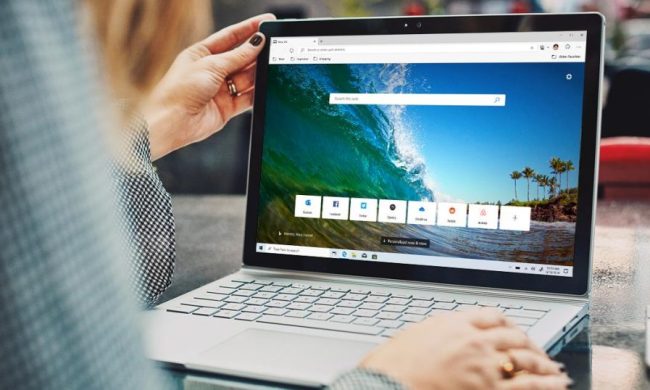Microsoft conducted three separate tests over a period of weeks, said Microsoft’s Web Platform Team director Jason Weber: one that measured the power consumption of popular web browsers — Mozilla Firefox, Edge, Chrome, and Opera — in a “controlled lab environment,” a second that used “real-world energy telemetry” from “millions” of Windows 10 machines, and a third that focused solely on battery longevity.
The lab test involved connecting a Surface Book to “specialized power-monitoring equipment,” Weber explained, to measure the laptop’s instantaneous power consumption as it ran tasks meant to approximate an average user’s browsing session. After hours of video streams, tab switching, and navigation of sites like Facebook, Google, YouTube, Amazon, and Wikipedia, Microsoft collected enough diagnostic data to correlate power draw “to the energy consumed by the machine.” The result? Edge used just 2,068 milliwatts of power during peak workload — less than the 2,819mW Chrome consumed and the 3,077mW and 3,161mW Opera (on battery-saver mode) and Firefox drew, respectively.
“Our tests show that Microsoft Edge is a more energy-efficient browser on Windows 10,” said Weber. “We designed Microsoft Edge from the ground up to prioritize power efficiency and deliver more battery life, without any special battery-saving mode or changes to the default settings. Microsoft Edge is built to maximize the potential of your hardware to operate efficiently on daily activities, while using minimal resources when a page isn’t being used.”
The second test involved “billions” of real-world data points collected from Windows installations from around the world. Microsoft used the Energy Estimation Engine (E3) service, which monitors the internal power draw of battery-powered Windows 10 devices. Within that data set, Edge eked out an even larger battery win over the browsing competition: with a measured average power draw of just 465.24 mW, it bested Chrome’s (719.72 mW) and Firefox’s (493.5 mW) numbers by a noteworthy margin.
Microsoft’s final test saw video streamed across Firefox, Edge, Chrome, and Opera — the company ran the same looped, high-definition video on four Surface Book devices, each running a single instance of a browser, until all of the devices died. Edge lasted three hours longer (7 hours and 22 minutes) than the worst performer, Chrome (4 hours and 19 minutes), two hours longer than Firefox (5 hours and 9 minutes), and an hour longer than Opera (6 hours and 18 minutes).
Those numbers aren’t implausible. In a battery longevity test across Edge, Firefox, Opera, and Chrome, Digital Citizen found that Edge lasted the longest (and Chrome the shortest). And a recent Wall Street Journal test arrived at the same conclusion, Weber pointed out. “Our testing and data show that you can simply browser longer with Edge than with Chrome, Firefox, or Opera on Windows 10 devices,” he said. “People using Microsoft Edge simply get more out of their battery every day.”
But the battery prowess isn’t Edge’s alone, and Microsoft acknowledged as much. The next major Windows update, Windows 10 Anniversary, contains a number of battery-focused improvements that should see battery life gains across devices and software. Background tabs in Edge use fewer CPU cycles, for one, and networking tasks are executed a bit more expeditiously than they are currently. “These improvements will build on the efficiency demonstrated [in the tests] to make sure you can stay online longer with Microsoft Edge,” said Weber.


